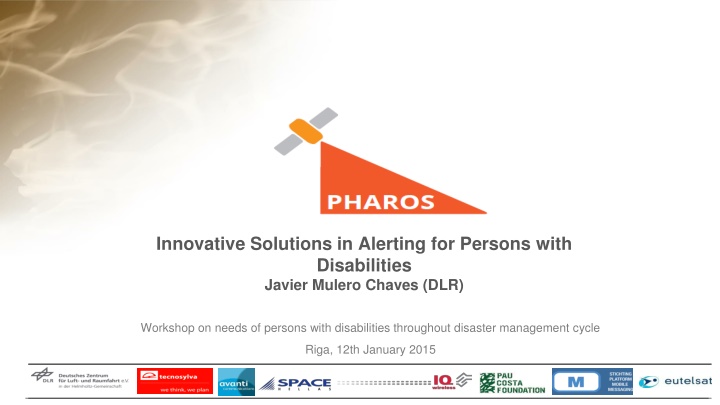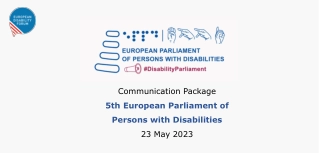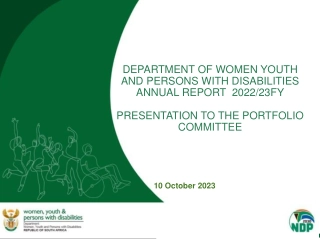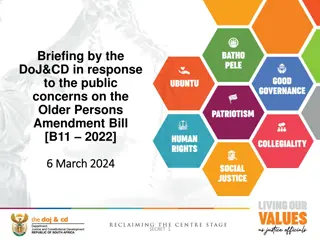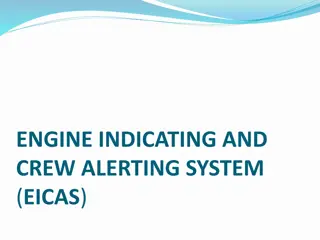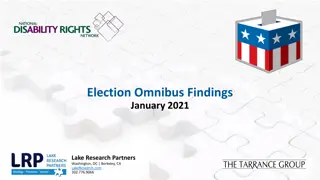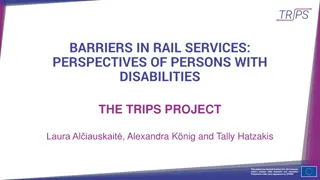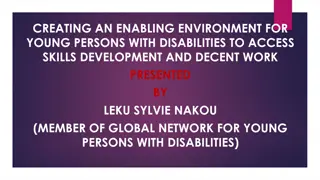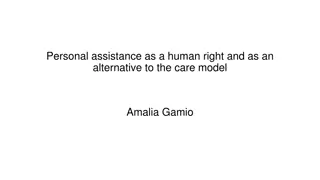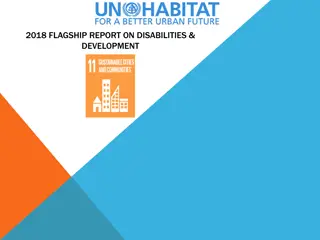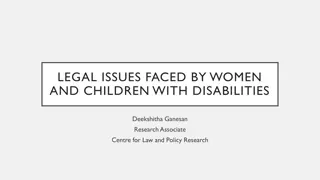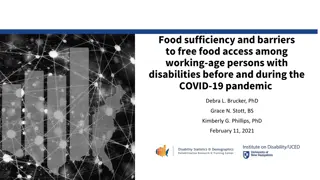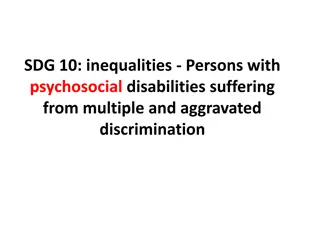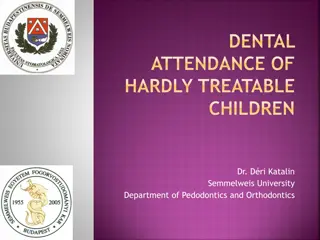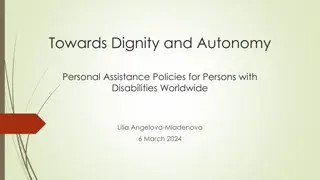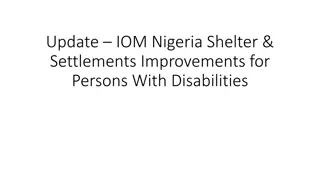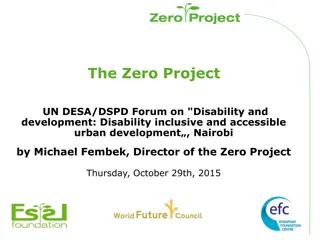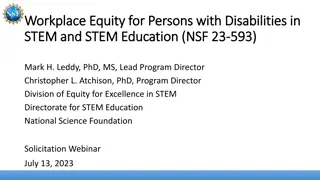Innovative Solutions in Alerting for Persons with Disabilities Workshop
Consider techniques for effective alerting systems tailored for individuals with disabilities during disaster management, covering alert reception, personalized multi-modal message delivery, and inclusive communication practices utilizing visual symbols, text, audio, and sign language.
Download Presentation

Please find below an Image/Link to download the presentation.
The content on the website is provided AS IS for your information and personal use only. It may not be sold, licensed, or shared on other websites without obtaining consent from the author.If you encounter any issues during the download, it is possible that the publisher has removed the file from their server.
You are allowed to download the files provided on this website for personal or commercial use, subject to the condition that they are used lawfully. All files are the property of their respective owners.
The content on the website is provided AS IS for your information and personal use only. It may not be sold, licensed, or shared on other websites without obtaining consent from the author.
E N D
Presentation Transcript
Innovative Solutions in Alerting for Persons with Disabilities Javier Mulero Chaves (DLR) Workshop on needs of persons with disabilities throughout disaster management cycle Riga, 12th January 2015
The Alerting Process Something happens Authority notices and makes a decision Authority alerts/informs the population The population applies protective action Who? it depends! Reach 99.99%? Type of hazard Timely Increasing threats Jurisdiction / Governance Communication Local / Regional /National / habits Increasing number of events European? Understand / Trust Plans Preparedness? Risk perception Different approaches Preparedness Slide 2
From alert reception to (re)action Several factors affecting the effectiveness of alerting systems: Prediction-related factors Dissemination-related factors Personal and cultural factors Understand Believe Verify Personalize Effective alert of population at risk Inclusive multi-channel communication Accessibility for people with disabilities: Access to the information Implementation of protective actions Slide 3
Multi-modal Delivery of Alert Messages (I) Objective: Improve understanding and personalization of alert messages Tailored presentation of alert messages according to the needs of people with disabilities: Visual symbols Text Audio Sign Language messages Challenges: Interface design Message creation Content transport: capacity / timeliness Slide 4
Multi-modal Delivery of Alert Messages (II) Storage and processing capabilities of receiver devices: Keeping intelligence at the user side Avoiding transmission of multimodal content Allowing tailored user configuration Allows message creation in a unique and consistent manner: Avoiding typos / jargon / complex structures Improving familiarity and trust in message ALERT MESSAGE CONTENT HAZARD TYPE LOCATION AT RISK PROTECTIVE ACTION TIME INTENSITY LIKELIHOOD SOURCE Slide 5
Multi-modal Delivery of Alert Messages (III) Modular composition of alert messages HAZARD TYPE LOCATION AT RISK TIME INTENSITY COUNTRY A REGION A.1 LOCALITY A.1.a LOCALITY A.1.b REGION A.2 LOCALITY A.2.a --------- GPS Coordinates ---------- AREAS OF INTEREST DD / MM / YYYY EARTHQUAKE TSUNAMI FOREST FIRE CHEMICAL EXPLOSION FLASH FLOOD TORNADO HURRICAN VOLCANO ERUPTION TROPICAL STORM BOMBING ... Richter Scale Other Scales --- GENERAL EXPRESSIONS SEVERE MODERATE LIGHT hh / mm / sec --- GENERAL EXPRESSIONS IMMEDIATELLY SOON TODAY TOMORROW ... CERTAINTY PROTECTIVE ACTION SOURCE OBSERVED VERY LIKELY LIKELY POSSIBLE UNLIKELY ... STAY IN CLOSE WINDOWS GET OUT GO TO SHELTER DO NOT APPROACH AREA ... Federal Off. of Civil Protection Land Off. of Civil Protection Police Dept. Slide 6
The Communications Paradigm USER SELECTS OPTIONS FROM ALERT LIBRARIES DATA BASE SELECTED OPTIONS ARE PROCESSED TO COMPOSE AN ENCODED ALERT MESSAGE ENCODED ALERT MESSAGE IS TRANSMITTED ENCODED ALERT MESSAGE IS LOCALLY PROCESSED ALERT MESSAGE IS DELIVERED IN THE RIGHT LANGUAGE / MODE TEXT SPEECH ALERT MESSAGE PROCESSING AUDIO / VIDEO LOCAL ALERT MESSAGE PROCESSING ALERT LIBRARIES DATA BASE LOCAL ALERT LIBRARIES Slide 7
Conclusions and Recommendations Improve effectiveness by increasing understanding and personalization Different needs require different presentation modes which can be combined Keeping intelligence at user side allows authorities the unique creation of alert messages Technical feasibility thanks to advanced receiver devices and the use of alerting libraries: User action is needed Standardization of procedures and solutions Slide 8
Contact Javier Mulero Chaves PHAROS Project Coordinator DLR - German Aerospace Center Institute of Communications and Navigation Oberpfaffenhofen 82234 We ling Germany Tel: +49 8153 28 3815 Fax: +49 8153 28 2844 Javier.MuleroChaves@dlr.de Slide 9
